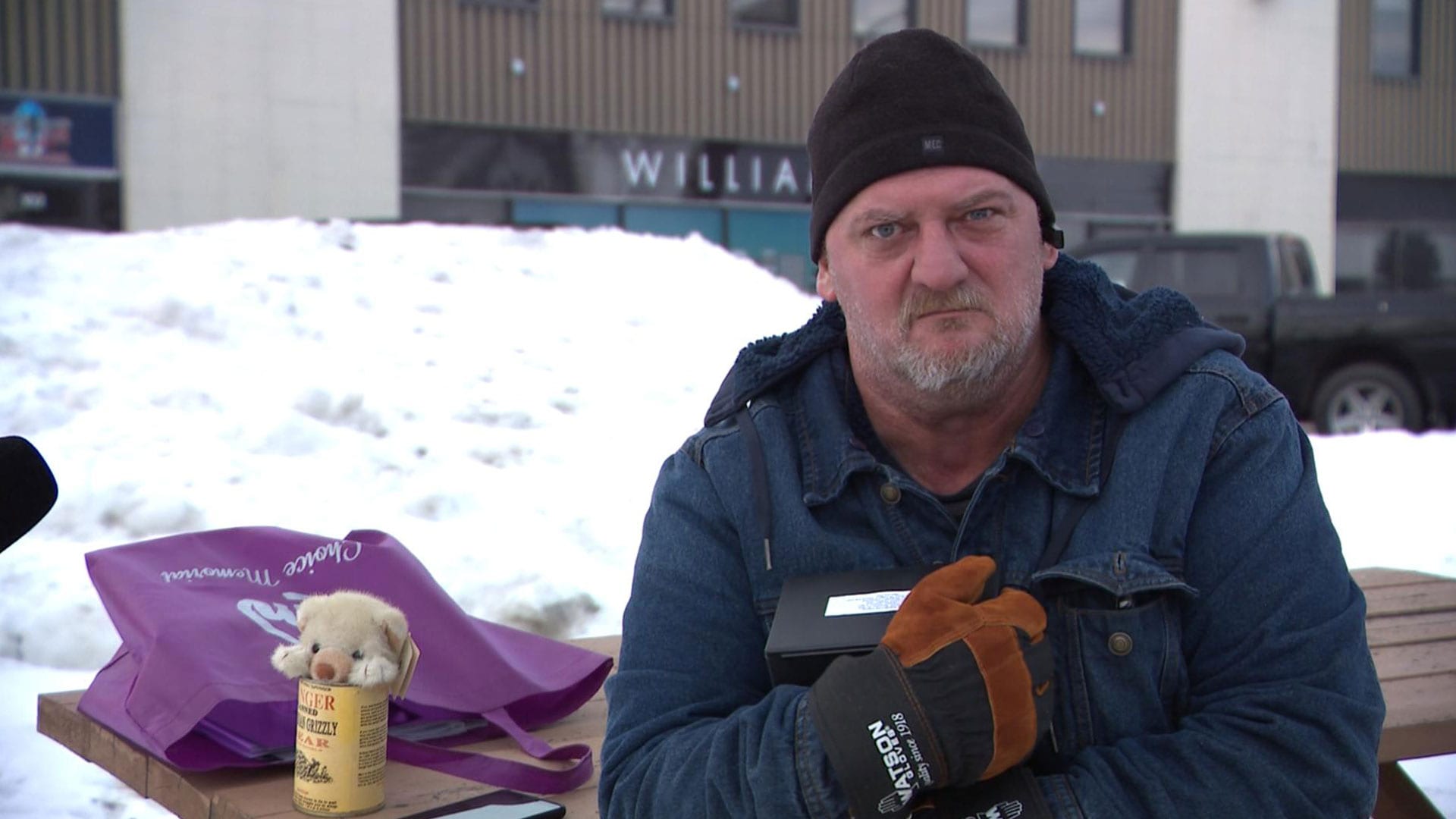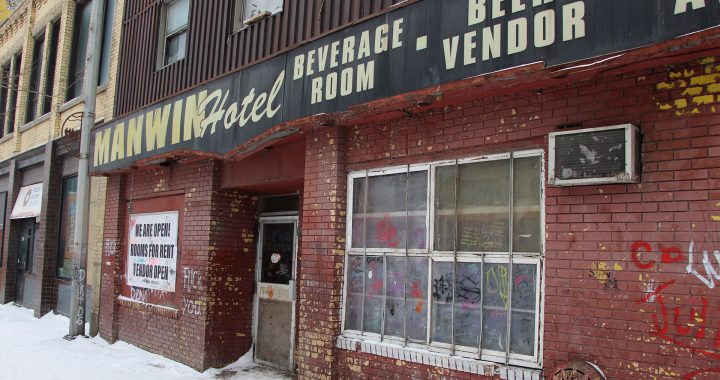It was Christmas day in their home of Hanna, Alta. when Cory Ashley realized something was wrong with his wife Lillian Vanasse.
“I can see my wife’s face was just beet red, she had sweat dripping down her face. I put my hand on her head and she was just burning up. She said, ‘I can’t breathe, it hurts, something’s wrong,’” he said.
He called 9-1-1 that evening.
Ashley was provided 400 pages of Lillian’s medical records – about 18 of those deal with her visit to the Hanna Hospital which APTN News reviewed.
According to those records, when paramedics arrived, Lillian was sweating heavily and pale. Paramedics noted; “lung sounds decreased on R side.”
Ashley met Lillian at the Emergency room of the Hanna Hospital, 200 kilometers northeast of Calgary.
“And that’s where my wife is on the bed. No oxygen, no nothing on her. She’s just laying there trying to breathe,” Ashley said.
“Now, she was cold instead of hot.”
An electrocardiogram, COVID swab and an x-ray on her chest were done. The x-ray came back clear and COVID-19 had been ruled out, according to her medical records.
The hospital medical records note that Lillian came in with “influenza type symptoms.”

Ashely said at this time, that he had requested many times for his wife to be given oxygen.
After almost two hours, he said Lillian, 40, hadn’t received any assistance to help her breathing.
That’s when Ashley started recording on his phone.
The video shows Lillian breathing heavily. An oxygen tank was placed on the floor on the other side of the room.
“I went up to my wife, put my arm around her and asked, ‘are you okay dear?’ She said, ‘I can’t breathe, I need help breathing, I can’t breathe, I need air.’ And she was shaking, she was scared,” Ashley told APTN in an interview in Calgary, outside of a crematorium, where he picked up Lillian’s ashes.
Ashley said his wife never did receive oxygen during the time he was with her in the hospital.
In the video, nurses can be heard saying the computers are down and test results are needed before any further treatment is given.
They can also be heard saying Lillian had “admitted to taking too much methadone,” a pain medication prescribed by her family doctor to treat abdominal pain.
Ashley said his wife did take too much methadone. She had finished her prescription three days early, one day before arriving in emergency; but in the video Ashley can be heard saying “that’s not why she’s here. She can’t breathe.”
According to hospital records, Lillian had been tested for meth, cocaine, opioids and THC use – which is standard practice according to one physician APTN spoke with.
Under a section titled; diagnosis, “methadone withdrawal” had been written. The use of oxygen is not mentioned in the report that was provided to APTN.
“She said, ‘I’m really scared,’ and it was so faint. I knew she wasn’t doing well, and they wouldn’t believe me,” Ashley said.
He admits to becoming agitated. After a confrontation with hospital security, RCMP was called, and Ashley was asked to leave.
The medical records show that after Ashley had been removed from the hospital, Lillian was given breathing exercises.
“Pt encouraged to keep breathing calm,” notes the report at 12:10 a.m.
At around 1 a.m., “Pt moved to Rm 104 for admission. Pt started breathing more heavily and encouraged to slow breathing down and teaching for breathing,” according to the medical record.
While in the hospital parking lot with the RCMP, Ashley continued to record.
An officer is heard relaying information from Lillian’s doctor.
“The doctor did tell me that they’ve checked all of her vitals and everything is looking pretty normal and they are going to keep her for observation for the night,” the officer told Ashley which can be heard on the recording.
At around the same time, according to the medical records, Lillian “arrested in front of the nurse,” presumably referring to a heart failure.
“Immediate CPR from 0100 hr continually until 0300 (2 hrs),” the record said.
Ashley went home, hoping to pick his wife up in the morning, but instead received a call from the doctor.
“She said ‘Cory, you have to get here, your wife stopped breathing.’ I said, ‘is she okay?’ and said, ‘no she’s not,’” he said, reliving the pain from the call.
He said when he arrived back at the hospital, he saw Lillian undergoing chest compressions.
“I looked and my wife’s body was dead, there was nothing there, I could see it. I heard a nurse say she’s had no pulse for 45 minutes since we found her,” he said.
“I put my hand under the blanket, and I put my hand on my wife’s leg and it was cold. It was cold.”
Alberta Health Services said an investigation has been launched into the care that Lillian received but wouldn’t comment on specifics.
“We are unable to discuss specific details of this case due to patient confidentiality and privacy, and that an investigation into the incident is being done. However, when a patient presents to one of our healthcare facilities with difficulty breathing, physicians and staff will do a full assessment of that patient, including a review of their medical history to determine what may be the cause.
“Most patients will be connected to a vitals machine, which will indicate whether a patient has sufficient oxygen saturation at all times. Another diagnostic tool may include a chest x-ray.”
“As with any adverse events, an investigation is being completed into this unfortunate incident.”
APTN also contacted a doctor who said she was unable to speak about this specific situation but was able to give general background information when it comes to patients with restricted breathing.
The physician said when a patient arrives in an emergency room with difficulty breathing, oxygen is often provided right away.
A patient’s use of pain killers, like methadone, wouldn’t be a reason to not administer oxygen the physician said.

A medical examiner investigator told Cory over the phone that Lillian’s autopsy showed she had wet lung, a condition resulting from the body’s inability to receive enough oxygen to the lungs that can result in pneumonia, organ failure and death, according to the Mayo Clinic’s website.
The cause of Lillian’s death is not yet known. It could take up to six to 12 months to determine.
“She wanted to live, she deserves to be alive and this is what I have left of my wife,” he said while holding her ashes in his arms.
Ashley questions Lillian’s treatment at the Hanna Hospital and why she died on Dec. 26, 2020 while in care.
He filed a complaint with the Alberta College of Physicians and Surgeons demanding that hospital’s policies and procedures “be immediately reviewed by a third party non-biased entity,” the complaint said.
He’s seeking a “full suspension of all staff members involved in the mismanagement of Mrs. Vanasse’s care.”
He said Lillian, originally from Sandy Bay First Nation in Manitoba, was a well-known, giving woman that cared deeply about her family.
“Everybody that knew her was glad they knew her because she touched them someway, somehow. 2015, we lived in Kamloops, she started collecting food and clothes and we were bringing them to the homeless. My wife gave to everybody.”
Correction: APTN originally used Ashley as Lillian’s last name. Her legal last name is Vanasse. We apologize for the error.










